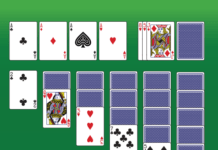Google is the most used search engine in the world , with more than 90 % market share. Each day, billions of requests are made on Google, to find information , products, services, images, videos, etc. But, do you know how to use Google effectively and get the best possible results? In this article, we are revealing 10 tips for researching Google as a pro .
1. Start with a simple search
The first tip is to start with a simple search , using the keywords most relevant to your topic. For example, if you are looking for the recipe for chocolate cake, simply type chocolate cake in the search bar. Google will show you the most popular and relevant results for your query.
If you want to narrow your search, you can add additional keywords, like easy, quick, or gluten-free. You can also use quotation marks to search for an exact phrase, such as “gluten-free chocolate cake” . So Google will only show you pages that contain that exact phrase.
2. Use voice search

If you don't want to type your query manually, you can use Google's voice search. Just say “ Hey Google ” or click on the microphone to the right of the search bar. Then you can dictate your query out loud and Google will show you the matching results.
Voice search is very convenient if you are on your smartphone or have your hands busy. It is also very effective for long or complex queries, such as “ What is the name of the president of Brazil?” ” or “What is the distance between Paris and New York?”.
3. Use web-friendly words
When searching on Google , try to use words that are likely to appear on the websites that interest you. For example, instead of typing I have a headache, type headache , which is the most commonly used phrase on medical websites.
Likewise, avoid using words that are too generic or too vague , like car or travel. Prefer more precise and specific words, like car model or travel destination . This way, you will obtain more relevant and targeted results.
4. Don't worry about details

Google is very smart and can correct your spelling mistakes or ignore upper/lower case in your query. For example, if you type napoleon bonaparte or Napoleon Bonaparte , you will get the same results.
Likewise, Google can understand the meaning of your query even if you don't use the exact words. For example, if you type in how much a plane ticket to London costs, Google will understand that you are looking for the price of a flight to London.
5. Discover quick answers
For some common or simple queries, Google may show you an answer directly in search results. For example :
- Weather : Type weather to see the weather forecast for your area, or add the name of a city, for example weather Lyon, to see the local forecast.
- Dictionary : type definition in front of a word to get its definition.
- Calculations : Type a calculation, such as 3×9123 or any other complex math operation to get the answer immediately.
- Unit conversions
- Sports : Type the name of your favorite team to see the match schedule, results and more.
- Facts : Type in the name of a famous person, place, movie title, or song to get information about the topic.
6. Use advanced search

If you want to refine your search more precisely, you can use Google's advanced search. To access it, click on Settings then on Advanced search, to the right of the search bar.
Advanced search allows you to choose words or phrases to include or exclude from your results. For example, you can search for pages that contain all of the following words: chocolate banana cake, or those that contain any of the following words: chocolate banana cake or chocolate banana cake.
You can also choose options such as language, region, update date, file format, site type or image usage rights.
7. Use search operators
Search operators are symbols or words that you can use in your query to modify the results. For example :
- The minus sign (-) allows you to exclude a word or a site from your search. For example, if you type chocolate cake -banana, you will get results that do not contain the word banana. If you type chocolate cake -site:marmiton.org, you will get results that do not come from the marmiton.org site.
- The plus sign (+) allows you to include a word that is often ignored by Google, such as and or the. For example, if you type Star Wars +and , you will get results that contain the word and in addition to Star Wars.
- The tilde symbol (~) allows you to include synonyms or words close to the word you entered. For example, if you type ~car, you will get results that also contain the words auto, automobile, or vehicle.
- The star symbol (*) allows one or more words to be replaced in your request. For example, if you type chocolate recipe *, you will get results that contain recipe followed by any word and chocolate.
- The colon (:) symbol allows you to limit your search to a site type, domain, or range of numbers. For example, if you type site:edu , you will get results that come only from educational sites. If you type domain:fr, you will get results that only come from French sites. If you type numbers between: 1000…1500 , you will get results that include a number between 1000 and 1500.
8. Use image search

search allows you to search based on an image rather than text. You can find the origin of an image, its author, its name, its date, etc. You can also find images similar or related to the image you have chosen.
To search by image , click Images at the top right of the Google page. Next, click on the camera icon in the search bar. You can then choose to import an image from your computer, paste the URL of an image found on the web, or drag and drop an image into the search bar.
Google will then show you the results corresponding to your image.
9. Use Google Lens

Google Lens is an application that uses artificial intelligence to analyze images captured by your smartphone . You can thus obtain information about what you see around you, such as the name of a plant, an animal, a monument, etc.
You can also use c to translate text, scan barcodes, copy handwritten text or even identify products or works of art . To use Google Lens , you need to download the app on your smartphone and launch it. Then, just point your camera at what you want to analyze and Google Lens will show you the relevant information.
Google Lens is very useful if you are traveling abroad, shopping, or want to learn more about your surroundings.
10. Use tabs and filters
Finally, the last tip is to use Google's tabs and filters to refine your search according to the type of content you are looking for . For example, if you're looking for images, click the Images tab at the top right of the Google page. You can then filter the images by size, color, type, usage rights, etc.
Similarly, if you are looking for videos, click on the Videos tab and filter videos by duration, quality, source, etc. You can also use the News, Shopping, Books or Maps tabs to find the content that meets your needs.
FAQs

Here are some frequently asked questions about Google search:
How to do a reverse search on Google?
A reverse search involves searching based on an image rather than text . To do a reverse search on Google, you can use image search or Google Lens, as explained in tips 8 and 9.
How to search by date on Google?
To search by date on Google , you can use the colon (:) followed by the date or time period you want to search. For example, if you type coronavirus:2020, you will get results from the year 2020. You can also use the Tools Date filter to choose a predefined or custom time period.
How to do a keyword search on Google?
To do a keyword search on Google , simply type the keyword you want to search for in the search bar. You can also use quotation marks to search for an exact phrase or a minus sign to exclude a keyword. For example, if you type “chocolate cake” – banana , you will get results that contain the exact phrase chocolate cake but not the word banana.
How to search by file type on Google?
To search by file type on Google , you can use the colon (:) followed by the extension of the file you want to search for. For example, if you type filetype:pdf , you will get results that are PDF files. You can also combine this technique with other keywords or search operators to refine your search.
Conclusion
Now you know how to search Google like a pro . By using these 10 tips, you will be able to easily and quickly find the information you are looking for on the web. Feel free to experiment with different keywords, search operators, or filters to refine your results. And if you need help, you can always visit Google Search Help or ask your question in the Help Community. You can also bring up the Google search bar on your screen by clicking on the magnifying glass icon at the top right of your browser. This will allow you to access Google more quickly and start your searches without having to open a new tab.



